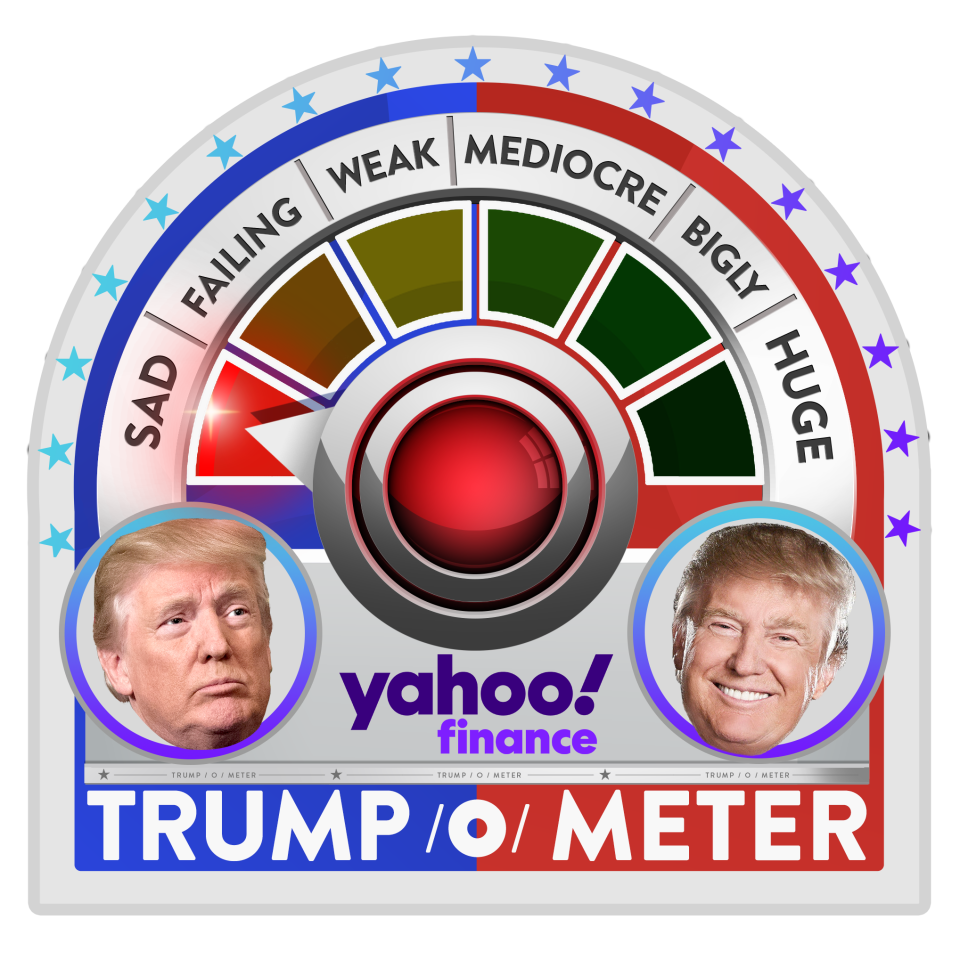This week in Trumponomics: Liberation wars
President Trump did a couple of things right this week. He backed a coherent if better-late-than-never federal plan for reopening the economy, which is largely shuttered due to the coronavirus pandemic. And he deferred to governors who are the ultimate deciders in terms of what reopens and what stays closed.
But Trump undermined these passing moments of sensibility by stoking outrage in a handful of states struggling with high infection rates and economic damage. On April 17, Trump posted a series of tweets urging protesters to “LIBERATE” Michigan, Minnesota and Virginia. It was essentially a war whoop for stupid people who think it’s better for everybody to get the virus than to shut down businesses for a while. Protestors have already put on an imbecility display in Michigan, where they’ve bunched together at the state capital in a show of defiance to Gov. Gretchen Whitmer’s stay-at-home order. Trump is essentially fomenting rebellion in swing states with Democratic governors that are crucial to the 2020 presidential election.

Trump is encouraging Americans to violate his own federal guidelines. And some people are undoubtedly dumb enough to do it, unaware that Trump is using them as virus fodder. Trump’s message is “don’t worry about getting sick, just attack my political enemies for me.” It seems inevitable there will be karmic moments in which Trump’s foot soldiers catch the virus and perhaps even die. Trump will be fine, though, safe in the White House or on one of his golf courses. So it’s all good.
Trump’s reopening plan, judged on its merits, would have rated an improvement over last week’s FAILING score on the Trump-o-meter. But there’s only one possible Trump-o-meter score for encouraging gullible people to charge head-on into a virus cloud: SAD.

Trump’s reopening plan, for what it’s worth, is a major improvement over his previous calls to open by some calendar date, such as Easter. There are no reopening dates now, which is a prerequisite for any credible plan, since calendar dates are irrelevant to a virus that remains prevalent throughout the world. Instead, the Trump plan establishes “gates” states and municipalities must pass through in order to gradually send people back to work in a phased manner that can be reversed if the virus flares up again.
These gating benchmarks set an appropriately high bar reopening businesses. “The gating criteria is more restrictive than one might realize,” financial firm Raymond James explained in an analysis of the plan. “We cannot think of a single state that can seriously claim they meet the ‘core state preparedness responsibilities’ at this time.”
The plan entails three phases, ranging from very limited movement to free movement for low-risk people and normal staffing at workplaces. To enter each phase, a state or region must have data showing an uninterrupted decline in coronavirus cases for 14 continuous days. If there’s a single day of increase during that time, the clock restarts.
Under the best scenario, it would take three 14-day periods—42 days—to go from a stay-at-home regime to phase 3. For the 40-something states with stay-home orders, that means June is the earliest for some semblance of normalcy to return. And even that is probably unlikely, given testing shortages and other gaps.

This very slow reopening timeline is what public health experts say is necessary to assure there’s no resurgence of the virus. Yet another necessity—massive scale-ups in testing—is missing from Trump’s plan. Trump seems to have a blind spot on testing. He has said repeatedly it’s going fine despite massive shortages, and even now he fails to acknowledge how far behind the United States is.
Still, what’s the point of any federal plan if the president tells people to disregard it? Governors have the final say, and they’re in the process of establishing their own criteria for a slow return to normal. Trump’s subversiveness will undoubtedly make it harder for governors trying to balance the risk of ongoing waves of infection against the economic damage caused by a prolonged shutdown.
There’s wide agreement that the worst outcome would be recurring waves of infection caused by removing precautions too quickly. That would add new stress to overwhelmed hospitals, bring on more preventable deaths, force new rounds of business closures and prolong what is already sure to be a painful recession. Yet that’s what Trump is asking for.
Chaos always emerges from order in the Trump administration. Before Trump began calling for swing-state rebellion, he declared supreme power over governors that he doesn’t actually have. He put a hold on funding for the World Health Organization, which is like gutting the budget for the fire department while your house is burning. And Trump now insists it’s the governors’ job, not his, to ramp up testing. If the president’s only job is to encourage people to defy their governors, why have a president at all?
Rick Newman is the author of four books, including “Rebounders: How Winners Pivot from Setback to Success.” Follow him on Twitter: @rickjnewman. Confidential tip line: [email protected]. Encrypted communication available. Click here to get Rick’s stories by email.
Read more:
Follow Yahoo Finance on Twitter, Facebook, Instagram, Flipboard, SmartNews, LinkedIn, YouTube, and reddit.
